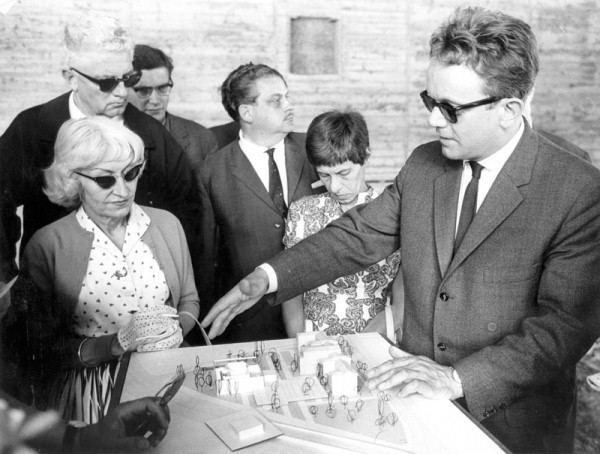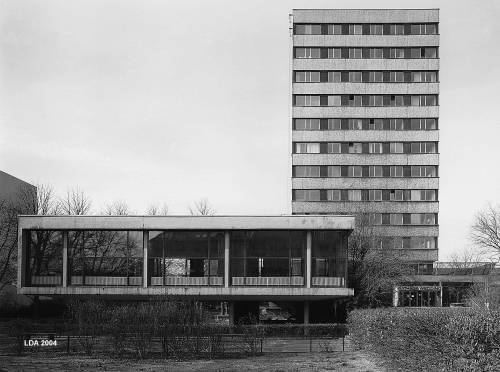Name Fritz Bornemann | Role Architect | |
 | ||
Structures Deutsche Oper Berlin, Bruno-Paul Building | ||
Fritz Bornemann (12 February 1912 in Berlin – 28 May 2007 in Berlin) was a German architect.
Contents

Life and works
Bornemann studied architecture at the Technical University of Berlin. After graduating in 1936, he was Assistant Scenic Designer at the Berlin Municipal Opera and, starting in 1945, Construction Supervisor with the city of Berlin. Since 1950 he became an independent architect active in Berlin. The designs for the Amerika-Gedenkbibliothek (America Commemoration Library) (1951–1955), the Deutsche Oper Berlin (1956–1961), the Freie Volksbühne (1961–1963) and the Museumszentrum Berlin-Dahlem (1966–1970) were drawn up by him. He also designed the headquarters of the Commerzbank Berlin (1969–1974).
He designed the German Pavilion for the 1970 World’s Fair in Osaka (Japan). With this building Bornemann decisively renounced the large architectonic gesture by burying the exhibition area below ground; a spherical auditorium served for multimedia presentations of current trends in electronic music.
Later there appeared, amongst others, the extension of the Rathaus of Berlin-Wedding and the University Library in Bonn. He never built residential houses.
Less well-known is his work in multimedia. He designed some exhibitions, amongst them Atom (1953) and Farmer Smith (1957). The Osaka Pavilion was his crowning achievement in this field.
Bornemann’s architecture was and is a subject of violent controversial opinions over the modern trends of the 1950s and 1960s. The critics speak of "cold" or "austere" architecture and belittle his buildings with expressions like "elegance in exposed-aggregate concrete." His adherents see in his work a model for modern architecture, and especially for modern theatre architecture.
For more than 16 years Fritz Bornemann was Chairman of the Bund Deutscher Architekten (Association of German Architects).
